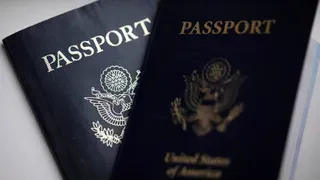December 16, 2010
Thousands on HIV drugs desperate amid budget woes
Kilian Melloy READ TIME: 5 MIN.
Cash-strapped states are cutting back on a program that provides free medicine to people with HIV, leaving thousands of patients to wonder where their drugs will come from and stirring fears of a return to the days when an AIDS diagnosis meant certain death.
At least 19 states have taken such steps as capping enrollment, dropping patients, instituting waiting lists, lowering the income ceiling for eligibility, and no longer covering certain drugs or tests.
The AIDS Drug Assistance Program is funded by the federal and state governments and run by the states. It provides free drugs in all 50 states and U.S. territories. But because people are living longer with HIV and the recession has created more demand for the program, states have been unable to keep up.
"It's very frustrating to be stuck in this position at this age and not feel well and be wondering if I am going to die any differently than the people who I helped die in the '80s," said Stephen Farrar, 55, of Fort Lauderdale, Fla., who has HIV and is going on Florida's waiting list. "Am I going to be one of those people?"
Health officials and advocates believe most people on ADAP's waiting lists are getting AIDS drugs free from pharmaceutical companies. But advocates say an unknown number are falling through the cracks of those programs, which provide only a patchwork of coverage and have widely varying income requirements.
AIDS drugs can be extremely expensive - a single one can cost more than $20,000 per year, and patients often need to take a cocktail of prescriptions to treat the disease or keep symptoms at bay.
In nine states, more than 4,500 people with HIV are on ADAP waiting lists or can't get into the program because enrollment is capped, according to the National Alliance of State and Territorial AIDS Directors.
More than 300 people who had coverage were dropped this year, after five states lowered their income eligibility limits to as little as $21,000 per year. Hundreds more face the same fate by February if more states follow through on plans to cut their eligibility, the alliance said.
Several states have started covering fewer drugs - only AIDS medications, for example, but not drugs for conditions often developed by those treated for HIV.
The cutbacks have set off alarm among some HIV patients, with some people cutting pills in half to make them last longer, said Stephen Hourahan, executive director of AIDS Project Rhode Island, a state that was hit hard by the economic downturn and which instituted a waiting list this fall.
"There were stories of people calling us in a panic because they were afraid they were going to die if they didn't have their meds," he said.
Waiting lists have been instituted previously for the program, said Ann Lefert of the National Alliance of State and Territorial AIDS Directors. But as demand has spiked, she said, the lists now are bigger than ever before.
The program had more than 168,000 people nationwide on its rolls in 2009, the most recent numbers available. The federal government spent $860 million on ADAP programs in the fiscal year that ends March 31, while states spent $336 million. In 2009, California, for example, spent $71 million, Texas $27 million and Illinois $14.5 million.
Nearly 1,400 people entered the program every month nationwide this year, compared with half that number in 2008, the alliance said. While many states have increased money sent to the program, it often hasn't been enough to keep up with demand, and they've had to cut services. Despite the greater need, 12 states have put less money into their drug programs.
Most people on ADAP don't qualify for Medicaid because they are not sick enough to be considered disabled. Some who do qualify can get only limited drug coverage; ADAP covers the gap.
Making sure patients with HIV take their medications faithfully is a high priority of health care workers because it reduces the chance they will develop resistance to drugs and may also lower the risk of transmission.
Farrar lost his health insurance this month, more than a year after losing his job doing hair and makeup at a Florida TV station. Once his final insurance-covered prescriptions run out, he will have to worry about filling 17 prescriptions - two AIDS drugs and the rest for related ailments, such as arthritis and wasting, a severe weight loss. He will be one of more than 2,400 patients on Florida's waiting list, which was started June 1.
The cuts hit even those with insurance because copays can reach $500 to $700 per month for a single drug, and ADAP often helps with those copays.
"This is a huge financial burden on folks, but there's not a whole lot we can do," said Kevin Sullivan, executive director of the Ohio AIDS Coalition. The state has more than 370 people on the waiting list and dropped more than 250 others from the program because of now-lower income limits.
The process for getting free drugs from pharmaceutical companies can be difficult to navigate because each has different rules, with some limiting patients' income to $21,000 per year and others covering patients who make up to $54,000.
Patients who take many drugs from different makers, like Farrar, have to qualify for multiple drug company programs. If they qualify for one but not another, they might have to change their drug regimen, which can affect their health.
Elaine Henderson, 39, of Cleveland, gets her single AIDS drug through a pharmaceutical company's free program but worries about what will happen if the company changes its requirements.
"Right now, I'm hoping that I'll be OK until ADAP is fixed. If not, then I'll be in trouble," she said.
During the summer, after several states instituted waiting lists, the federal government infused the program with $25 million, which helped some states eliminate waits. But that fell about $100 million short of what AIDS advocates estimated was needed, Lefert said. The House recently approved a $60 million increase for the year starting April 1, but it hasn't passed the Senate and would not solve the program's woes for the current fiscal year, Lefert said.
Rep. Barbara Lee, D-Calif., said states must do their part to provide money, but given the economic slump, the federal government needs to step in and do more.
"Just to let people hang out there without any notion of where they're going to get their lifesaving treatments or drugs, it's really morally offensive," she said.
In the meantime, states are looking for ways to move money around in their budgets to cover ADAP.
Rhode Island was able to close its waiting list this month after finding money elsewhere in the budget. Florida's program, which has a deficit of $15 million to $17 million for the current fiscal year, hopes to do the same, but that probably would not happen until July.
But Sullivan, of the Ohio AIDS Coalition, said: "This is going to take a federal solution. To expect the states with their budget crises to bail this out is not realistic."
Farrar said he has written to his congressman and President Barack Obama about his plight.
"I'm in limbo. It's very stressful," he said. "I don't have much hope that it's getting any better."
Kilian Melloy serves as EDGE Media Network's Associate Arts Editor and Staff Contributor. His professional memberships include the National Lesbian & Gay Journalists Association, the Boston Online Film Critics Association, The Gay and Lesbian Entertainment Critics Association, and the Boston Theater Critics Association's Elliot Norton Awards Committee.







